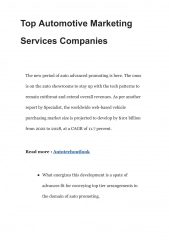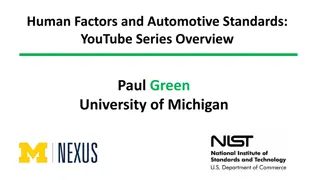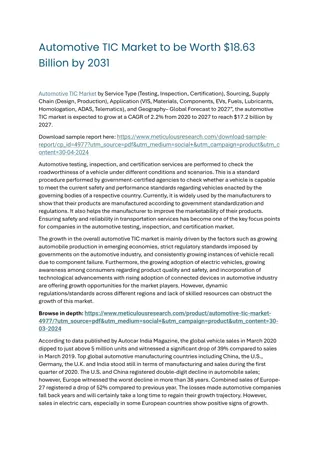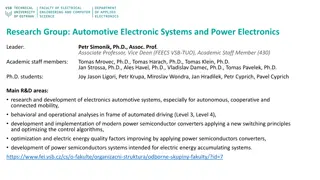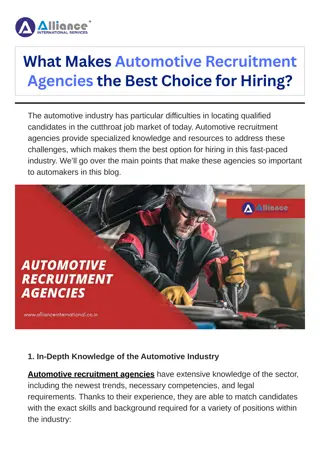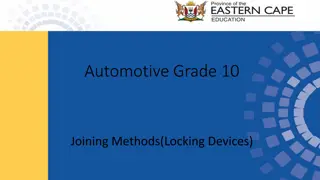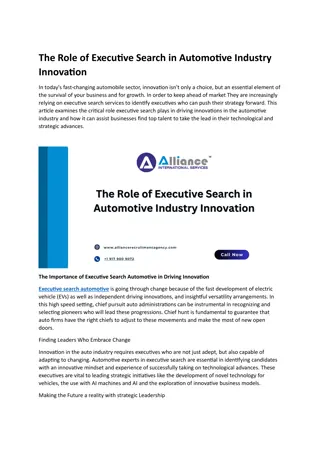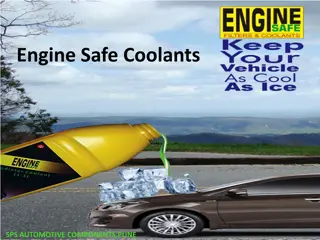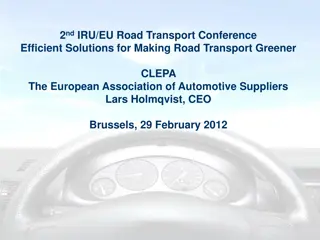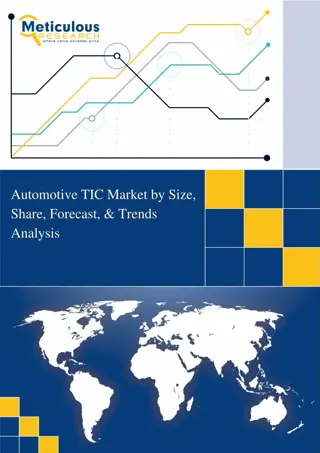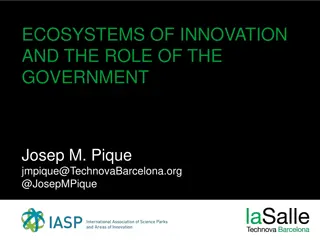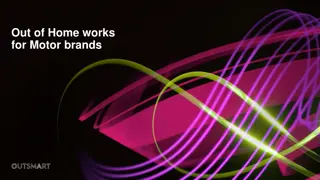
Journey of Automotive Innovation Through History
Tracing the evolution of automotive technology from the first steam-powered vehicles to modern electric cars, this narrative showcases key milestones and inventors who shaped the industry. Highlights include the introduction of early electric motors, advancements in engine technology, the shift towards electric vehicles, and the emergence of hybrid models. The journey culminates with the introduction of game-changing EVs like the Tesla Roadster and Nissan Leaf, marking a new era in automotive innovation.
Download Presentation

Please find below an Image/Link to download the presentation.
The content on the website is provided AS IS for your information and personal use only. It may not be sold, licensed, or shared on other websites without obtaining consent from the author. If you encounter any issues during the download, it is possible that the publisher has removed the file from their server.
You are allowed to download the files provided on this website for personal or commercial use, subject to the condition that they are used lawfully. All files are the property of their respective owners.
The content on the website is provided AS IS for your information and personal use only. It may not be sold, licensed, or shared on other websites without obtaining consent from the author.
E N D
Presentation Transcript
Journey of Automotive 1st Steam Powered Vehicle (TOY CAR) by Ferdinand Verbiest in 1672. High Pressure Steam Engine (Full-sized vehicle) by Richard Trevithick in 1801. Steam Engine (Vehicle) by Nicolas Cugnot in 1771 Steam Engine (Carriage) by William Murdoch in 1784. IC Engine using Hydrogen and Oxygen Mixture by Francois Isaac De Rivaz in 1826 1st IC Engine (Vehicle) by Isaac de Revaz in 1806 Oil-fired steam car by Josef Bozek in 1816. Toy Car (Electric) by Anyos Zedlik in 1826 High wheeled carriage with bracing Two cylinder steam engine by Henry Seth Taylor in 1867. 1st Self-propelled steam road vehicle by Amebdee Bollee in 1873. 1st automobile in US (Steam-powered Vehicle) by Dr J.W. Carhart in 1871. Electric Tram introduced in LONDON in 1865
1st Electric Vehicle in production by Thomas Parker in 1886 (England) One-cylinder IC Engine using COAL GAS by Jean J. Lenoir in 1884 1st Low-voltage ignition system by Siegfried Marcus in 1883 1st Automobile IC Engine Vehicle by Carl Benz in 1885 1st Petrol Car built by Siegfried Marcus in 1875 1st Four- wheeled petrol- driven automobile by Frederick Bremer in 1892 1st Single- cylinder gasoline car built by George Foote Foss in 1896 1st Electric Vehicle by William Morrison in 1890 (USA) 1st True Electric Car by Andreas Flocken in 1888 (German) 1st Electric Starter in between 1895 & 1898 1st Single- cylinder gasoline car built by George Foote Foss in 1896 Electric Vehicle in 1906 with 100 miles of range 1st NiMH & Lion battery electric car by 1997 Toyota & Nissan in 1997.
A) In 1828, the Hungarian priest and physicist Anyos Jedlik invented an early type of ELECTRIC MOTOR. B) In 1906, electric vehicles are very advance and had a range of 100 miles with the TOP SPEED of 45~50 kmph. C) Electric vehicles dominated by Gasoline cars by Assembly line production, using self start motor, Cost reduction year on year, non reliable, easy start, no charging time, easily carry extra fuel and Oil lobby. D) New ERA of EV start in 2006 in Santa Monica Auto expo where TESLA introduces TESLA ROADSTER And In 2010 Nissan introduces Leaf first affordable 5 door hatchback EV . Milestones in Automotive Journey
Introduction to Hybrid Electric Vehicles Types of EV- HEV- Hybrid BEV- Battery PCEV- Fuel cell Hybrid Architecture Series Parallel Series-Parallel Degree of Hybridisation HEV (Battery) Micro Mild Fuel
Disadvantages: 1) Larger, more complicated battery and motor to meet its power needs. 2) Addition of generator make it costlier. Advantages: 1) Engine operates at its maximum efficiency. 2) Capable of attaining zero emission. Hybrid Electric Vehicle- Series Power converter Gasoline Tank IC Engine Generator Battery Pack Power Converter Motor Drive Transmission Motor
Hybrid Electric Vehicle- Parallel (HEV) Electric Motor / Generator Gasoline Tank Motor Drive Transmission IC Engine Advantages: Disadvantages: Power converter 1) Reduced Traction motor size. 2) No need for a generator 1) Extra cost. 2) Extra Weight Battery Pack
Advantages: 1) IC Engine is also used to charge the battery. 2) Capable of proving continuous high output. Disadvantages: 1) Costly. 2) Requires a generator, a large battery pack & more computing power to control two system. Hybrid Electric Vehicle- Series-Parallel Power Split Power converter Gasoline Tank IC Engine Generator Transmission Battery Bank Power Converter Motor Drive Motor
Advantages: 1) Zero emission on battery driving. 2) Easy to drive. Disadvantages: 1) Relatively expensive. 2) Complex to maintain. Hybrid Electric Vehicle- Plug-in (PHEV) Electric Motor / Generator Gasoline Tank Motor Drive Transmission IC Engine Power converter Onboard Charger Battery Pack
Advantages: 1) Less Greenhouse Gas Emissions 2) Reduced Oil Dependence. Disadvantages: 1) Fuel cell durability & reliability 2) Expensive. Hybrid Electric Vehicle- Fuel Cell (FCEV) Fuel Cell Stock Power converter Power converter H2 Tank Battery Bank Motor Drive Electric Motor / Generator Transmission
Construction of BLDC Motor The construction of this motor has many similarities of three phase induction motors as well as conventional DC motors. This motor has stator and rotor parts like all other motors
Working Principle & Operation of BLDC Motor BLDC motor works on the principle similar to that of a conventional DC motor, i.e., the Lorentz force law which state the whenever a current carrying conductor placed in a magnetic field it experiences a force. As a consequence of reaction force, the magnet will experience an equal and opposite force. In case BLDC motor, the current carrying conductor is stationary while the permanent magnet moves.
Battery Pack Composition Advantage: Energy density Charging and discharging rate. Currently we are using Li-ion cells. NMC622 N= 60% M=30% C=20% Where N= Nickle M=Magnese C=Cobalt Disadvantage: Less charging stations. Higher initial cost. Limited driving range. Explosive.

